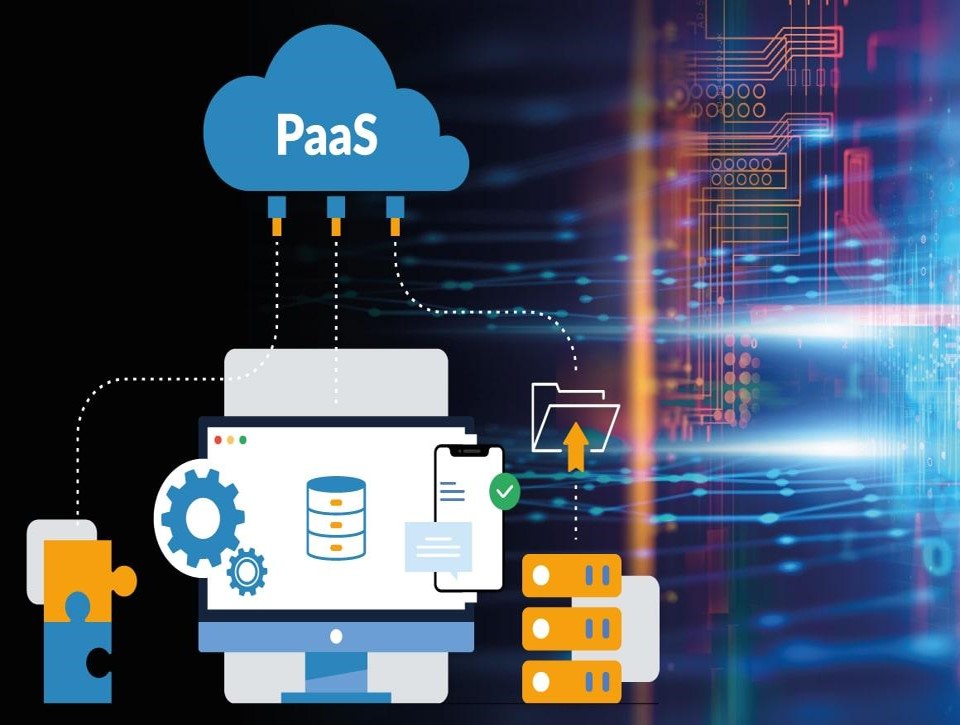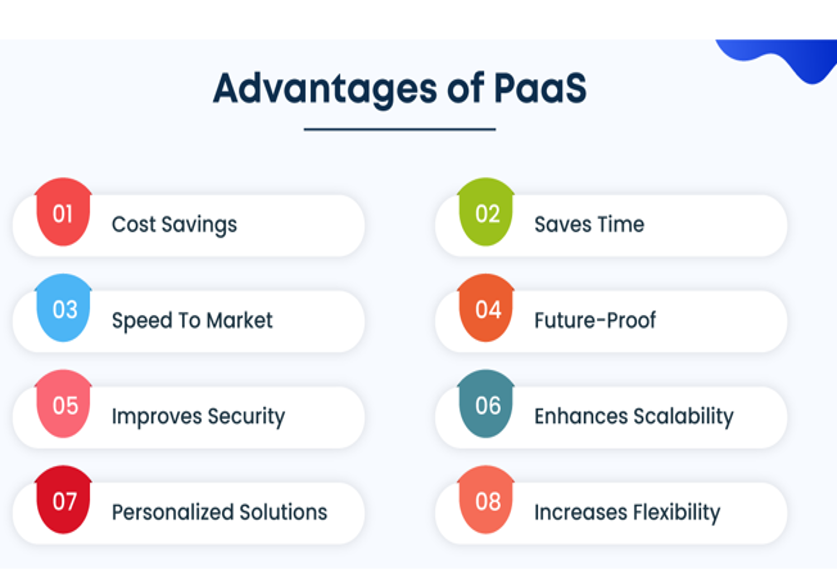
PaaS (Platform as a Service)
Platform as a Service (PaaS) in AWS offers an environment for running programmes. It makes it simple for programmers to build, test, launch, and maintain web applications.

These apps are available for pay-per-use purchase from cloud service providers, and we can use an Internet connection to access them. The cloud service provider handles back-end scalability in PaaS, so end users don’t have to worry about maintaining the infrastructure. In order to support the web application life cycle, PaaS comprises platform (middleware, development tools, database management systems, business intelligence, and more) and infrastructure (servers, storage, and networking).
Working of PaaS
In AWS, PaaS provides a platform for developers to build, deploy, and manage their applications without worrying about the underlying infrastructure. AWS takes care of the servers, storage, and networking, allowing developers to focus on writing code and building their applications.
With AWS PaaS services, developers can choose from a variety of tools and services to build their applications. They can use services like AWS Elastic Beanstalk, AWS Lambda, and AWS App Runner to deploy and run their code without having to manage the servers themselves.
For example, let’s say you want to build a web application. With AWS Elastic Beanstalk, we can simply upload your code, and AWS will handle the deployment, scaling, and management of the underlying infrastructure.

It takes care of tasks like provisioning servers, load balancing, and monitoring, so we can focus on writing your application code. PaaS in AWS also provides additional services like databases, messaging queues, and authentication services that can be easily integrated into your application. This allows you to leverage pre-built components and services, saving you time and effort in building and managing these services from scratch.
Advantages of PaaS
Let’s examine the benefits of PaaS:
1. Savings: There is no need for downtime expenses or hardware purchases.
2. Saves Time: PaaS saves time because its core stack doesn’t need to be configured or maintained.
3. Speed to Market: It expedites the process of app development.
4. Future-Proof: Users have access to data centres, operating systems, and state-of-the-art technology.

5. Boosts Security: A large portion of PaaS providers’ budget goes towards security technology.
6. Improves Scalability: It raises capacity during peak hours and lowers it when needed.
7. Customised Solutions: Using PaaS’s operational tools, developers can create customised solutions.
8. Boosts Flexibility: Users can access and utilise programmes from anywhere.
Types of PaaS
There are three main types of PaaS:–
1. Public PaaS– The public cloud is the ideal environment for using public PaaS solutions, which give users control over the deployment of apps while the vendor supplies and maintains all major infrastructure elements, such as servers, storage, databases, and operating systems (OS).
2. Private PaaS– Private PaaS providers maintain the agility advantages of public PaaS while putting a strong emphasis on security and compliance. Private PaaS functions inside the user’s private cloud and can run on any kind of infrastructure.
3. Hybrid PaaS– Hybrid PaaS solutions run in a hybrid cloud and are highly flexible as they combine the benefits of public and private PaaS, and offer the ability to own internal infrastructure in private PaaS.
Numerous spin-offs have also been born out of those three primary types. These three are the most well-liked ones:
– PaaS for communication
– Portable PaaS
– Enable PaaS


Popular PaaS Providers
Providers
1. Google App Engine (GAE)
2. Salesforce.com
3. Windows Azure
4. AppFog
5. Openshift
6. Cloud Foundry from VMware
Job Roles
1. Back-end developer.
2. Cloud engineer.
3. Data engineer.
4. Data scientist.
5. Development operations engineer
6. NET developer
7. Senior Java developer
8. Senior software engineer
9. Software architect
10. Systems administrator
11. Software engineer
12. System engineer
Salary Expected
The salary for PaaS in SCODEEN Global in India ranges between 13 lakhs to 35 lakh Per Annum.
Course Highlights
1- Suited for students, fresher’s, professionals, and corporate employees
2- Live online classes
3- 4-month program
4- Certificate of completion
5- Decision Oriented Program of Analysis
6- Live Classes by highly experienced faculties
7- Hands-on experience with real-life case studies

Conclusion
In Conclusion, PaaS (Platform as a Service) is a cloud computing model that provides developers with a platform to build, deploy, and manage applications without having to worry about the underlying infrastructure. It offers convenience, scalability, and flexibility by handling tasks like server management, scaling, and security, allowing developers to focus more on coding and application development.

